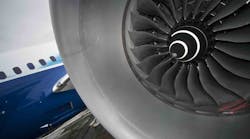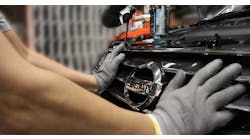A Rolls-Royce executive said the jet-engine builder has determined that sulfurization is the cause of cracking in certain sections of turbine blades for some Trent 1000 engines installed in Boeing 787 Dreamliner aircraft, a problem that Rolls has been working to resolve for about three years. According to a published report, Rolls civil aerospace chief customer officer Dominic Horwood said fixing the cracking problem in the intermediate pressure (IPT) section of the affected engines is the most important issue facing the company right now.
The Trent 1000 is high-bypass gas turbofan engine developed by Rolls-Royce as one of two options for Boeing’s twin-engine long-range aircraft. It was introduced commercially in 2011, and beginning in 2016 several Dreamliner operators began to report corrosion-related fatigue cracking with the Trent 1000 Package C engines’ intermediate-pressure turbine (IPT) blades, defects that may result in engine failure.
According to Horwood, the problem is caused when the nickel alloy blades “sulfurize” because of the concentration of air drawn in by the engine’s compressor system. Operating temperatures within the IPT and some of the specialized coatings on the blade may produce air turbulence and local temperature increases that contribute to fatigue in the blade structure, leading to cracks.
Because of the nickel alloy and the blade geometry, the Rolls executive stated, “We are very confident that this problem will not occur in any of our other engines. This is confined to component level in the Trent 1000.”
Since 2016, Rolls and the aircraft operators have reduced the inspection interval between Trent 1000 engine inspections from 200 flights to 80 flights.






